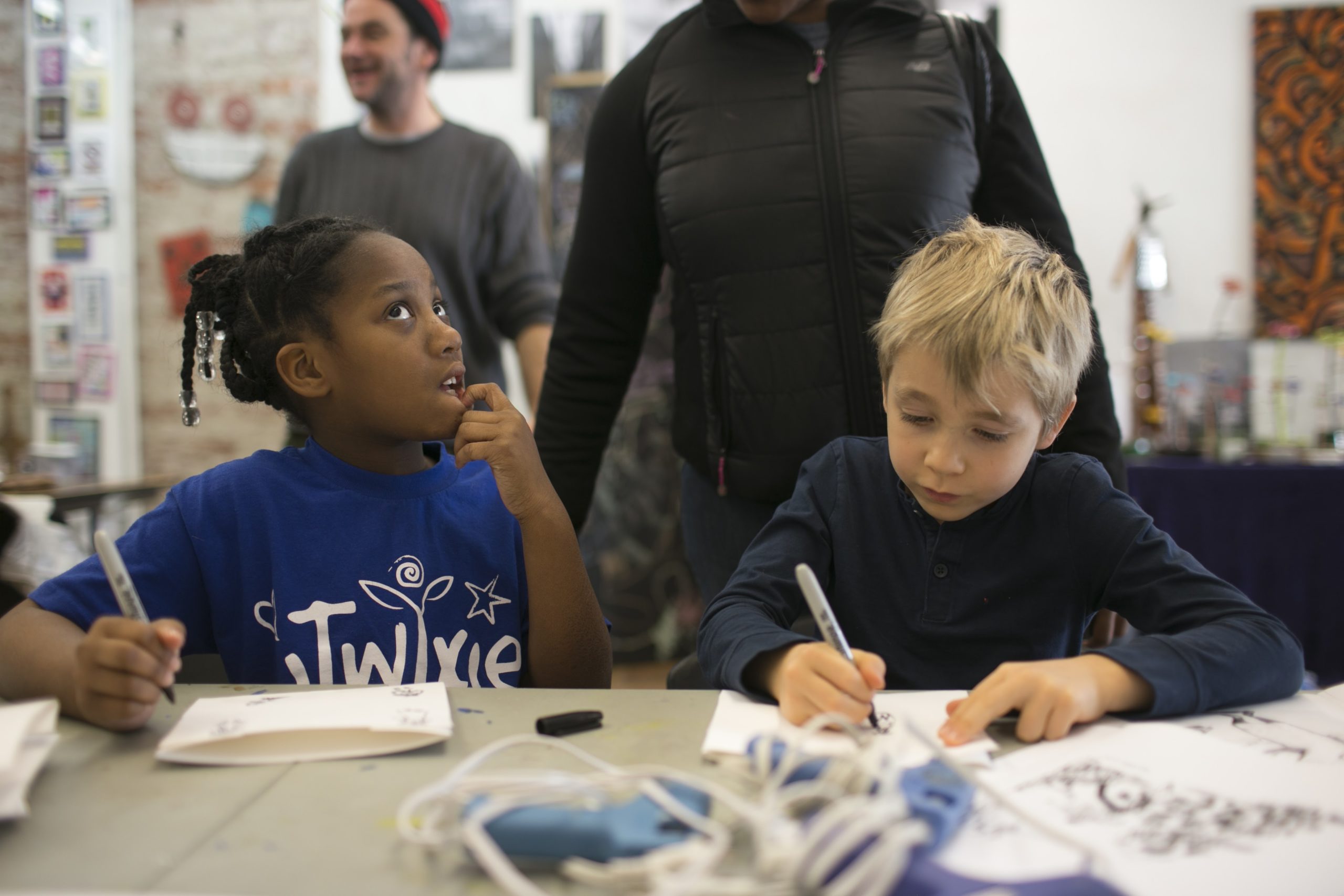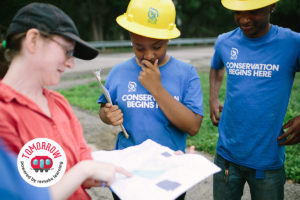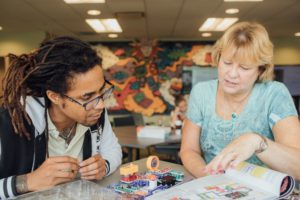
Remake Learning asks: What might tomorrow bring for learning in America?
By Melissa Rayworth
The sudden disruption of school has been messy and highly imperfect. Yet, as difficult as this time has been for students and educators, something has been clear: Tremendous shifts in how we approach learning are possible, and they can happen incredibly quickly.
For those already pursuing innovation in how children learn, this unexpectedly malleable moment is filled with possibility. Right now, everyone is listening. People aren’t just open to new ideas; they’re hungry for them. Parents are deeply involved, and many are newly aware of the ways their children are (and perhaps aren’t) learning.
And as longstanding inequities become more obvious, entire communities are discussing the importance of educating and supporting all children.
This is a challenging time, says Tyler Samstag, director of instructional innovation at the Allegheny Intermediate Unit. But “as we try to triage immediate needs, there’s a sense of hope that this is an opportunity to create a future that we want to see.”
Kelly Young, president of Education Reimagined, agrees: “There’s a huge opportunity now to not go back to ‘normal,’ but to actually invent a whole new way of organizing and supporting and credentialing learning.”
What might that future look like? There isn’t a one-size-fits-all answer, and experts say that’s a good thing.

“Then there are some things that are unique to particular communities, contexts and cultures,” she says. “My hope for the upcoming school year is that every community is thinking deeply about not just ‘What is the purpose of school and purpose of learning?’ but what they want learners to be able to know and do as a result of school.”
This kind of thinking has been informing education for nearly a decade in southwestern Pennsylvania. And it’s an approach that can be flexibly adapted to the goals and resources of any community.
Jason Swanson, director of strategic foresight at KnowledgeWorks, sees merit in bringing all the people associated with learning together to work toward a common goal, as Pittsburgh has done.
One example among many from Pittsburgh’s Remake Learning network: A team of educators and graduate students at Carnegie Mellon University’s Entertainment Technology Center mentors high school students as they tackle creative projects with 3D printing, virtual reality animation and a wide range of other technology. From brainstorming sessions to specialized “boot camp” meetings, the semester-long projects teach not just computer skills but also perseverance and the creative process of “failing forward.”
Swanson points out that when schools combine forces with local universities, museums, after-school programs, maker spaces, philanthropists and nonprofits, learners can benefit from “a seamless flow of resources and experiences across this large ecosystem.”
Imagine, he says, if a teenager pursued a hands-on project at a maker space like Pittsburgh’s Assemble and that work counted as part of their learning during the school year. This kind of real-world experience is already happening at Big Picture Learning schools in 26 states nationwide, where high school students work at internships and collaborate with mentors in their communities.
Big Picture’s co-executive director Carlos Moreno has found that adults are very willing to mentor students who are genuinely curious about possible career paths. And these students, he says, take pride in demonstrating their real-world learning through events like student-led conferences and portfolio exhibitions.
The work that Samstag and his colleagues do at the AIU’s transformED initiative has been enabling this type of whole-community collaboration for several years, and they’ve seen it embraced by school districts throughout the Pittsburgh region.
“We strategically design space for teachers to explore in cohorts, alongside their peers,” Samstag says. That connects teachers across districts so they can build on each other’s innovations. And “we use ‘educator’ as a pretty open-ended term. In any given workshop, it can be classroom teachers alongside librarians, folks from the museums, nonprofits and out-of-school-time.”
There was a time when community-wide involvement in educating kids was commonplace. “That’s actually how, ancestrally, things did happen,” Liebtag says. “Really, there’s knowledge and learning that happens everywhere. We just got really crappy at figuring out how to measure it and value it.”
Now, though, as we see older students step up to solve problems in their communities by helping deliver food or making protective masks, this broader understanding of learning for all kids has a chance to grow. More communities may begin acknowledging that real-world learning outside of school can be a measurable and meaningful part of children’s education.
Ideally, we’ll see more communities “providing more choice, providing more facilitation of big, bold projects and challenges for students to work on,” Liebtag says.
This spring’s school disruption and the uncertainty about whether students can gather in school buildings this fall have presented huge challenges. But these experiences may also serve as catalysts for embracing innovation.
“Before, we were confined in that room to the four school walls,” Liebtag says. Now, if communities embrace the idea that learning can happen anywhere, they can give students projects that can be done anywhere that space, resources and encouraging adults are available.
Says Young: “The way we’ve talked about it is that the community is the playground for learning, whether that’s an internship or a project. … We had separated learning from real life. We can put it back together now.”
This article is part of a series for ‘Tomorrow’ powered by Remake Learning. From May to October, “Tomorrow” will explore – through virtual events, grantmaking, and storytelling – what we can do today to make tomorrow a more promising place for all learners. Follow along or share your hopes for today’s young people using the hashtag #RemakeTomorrow and tagging @RemakeLearning. Learn more about Remake Learning here. And read more “Tomorrow” articles published on Kidsburgh here.
